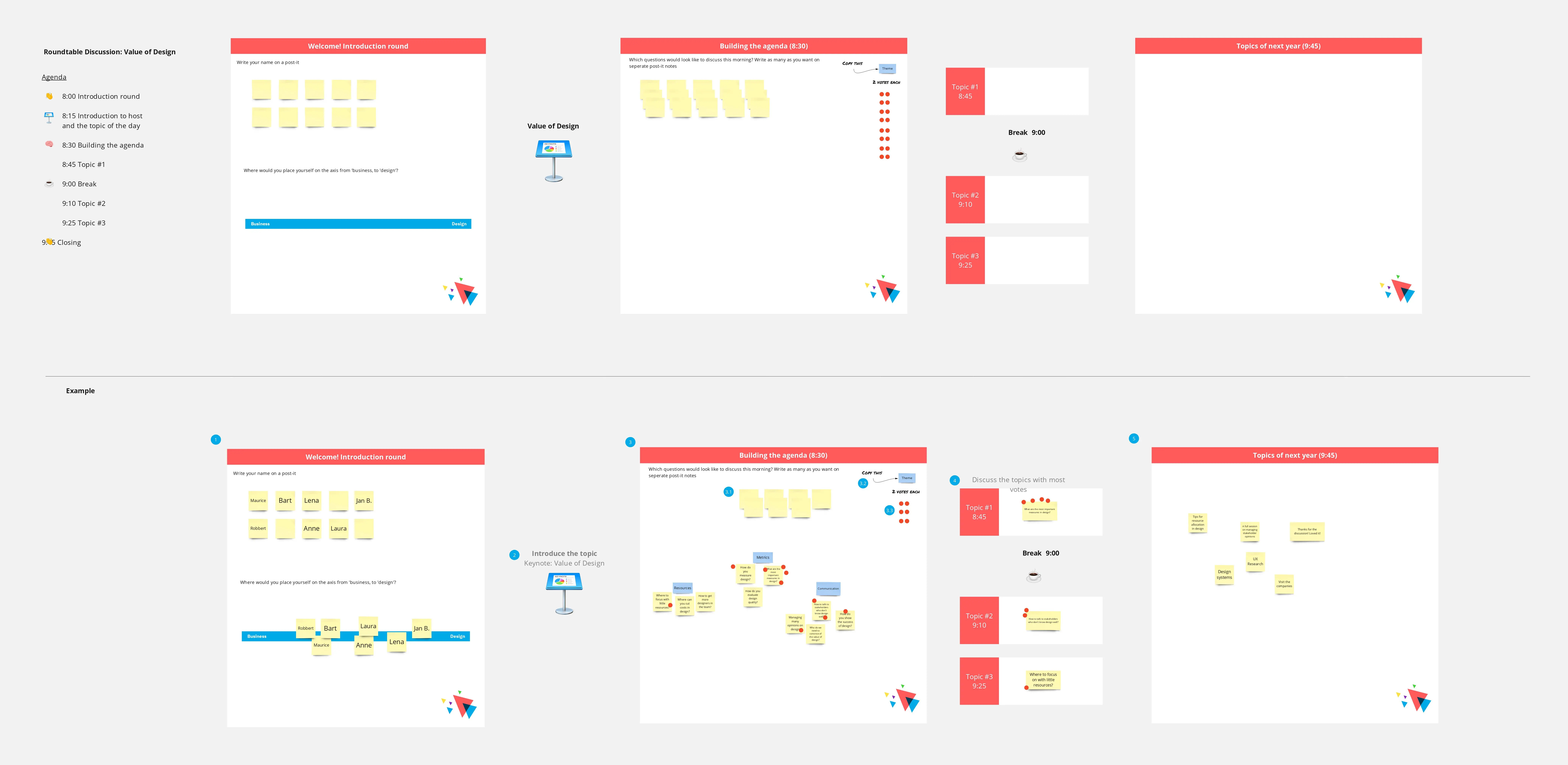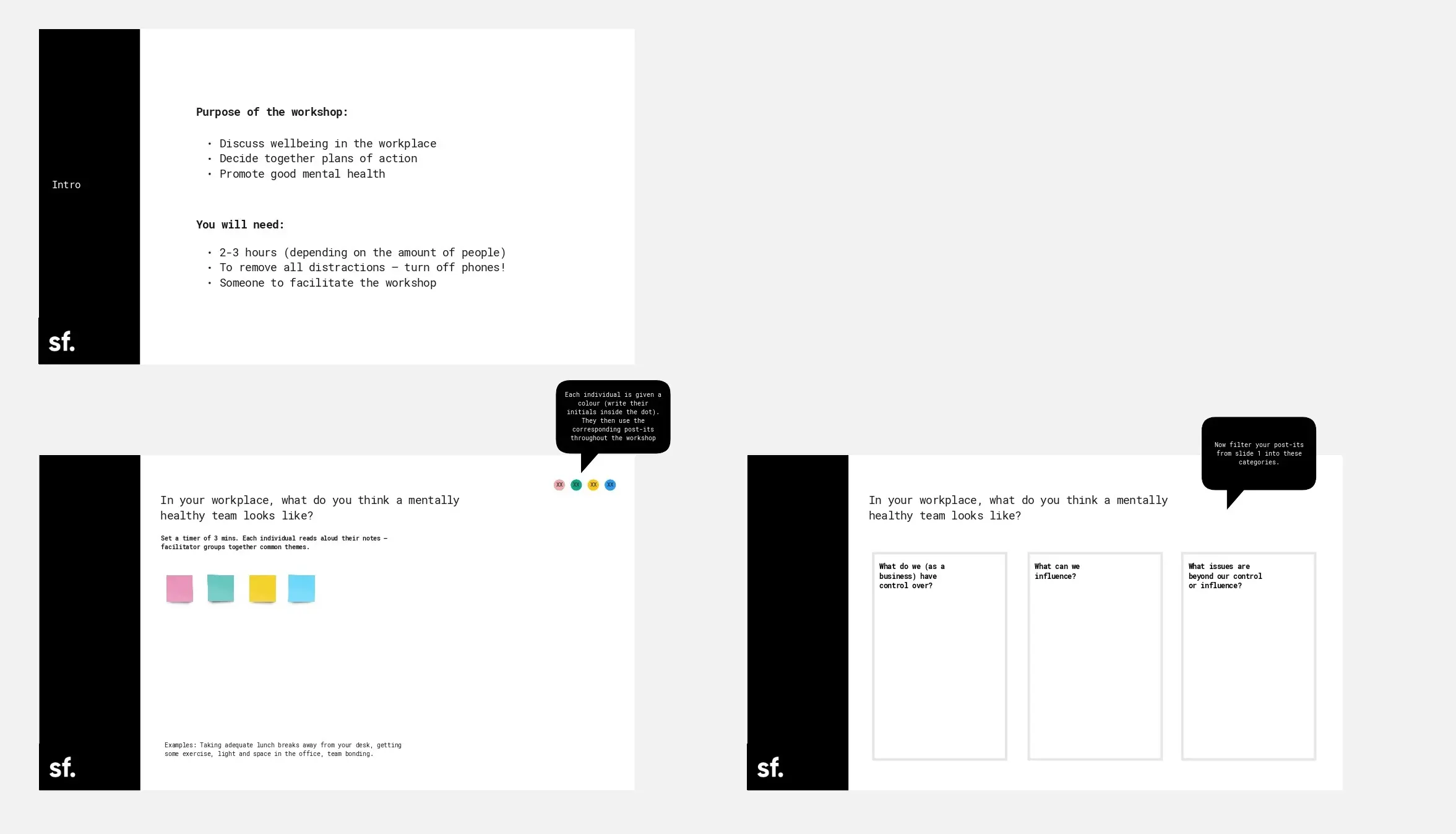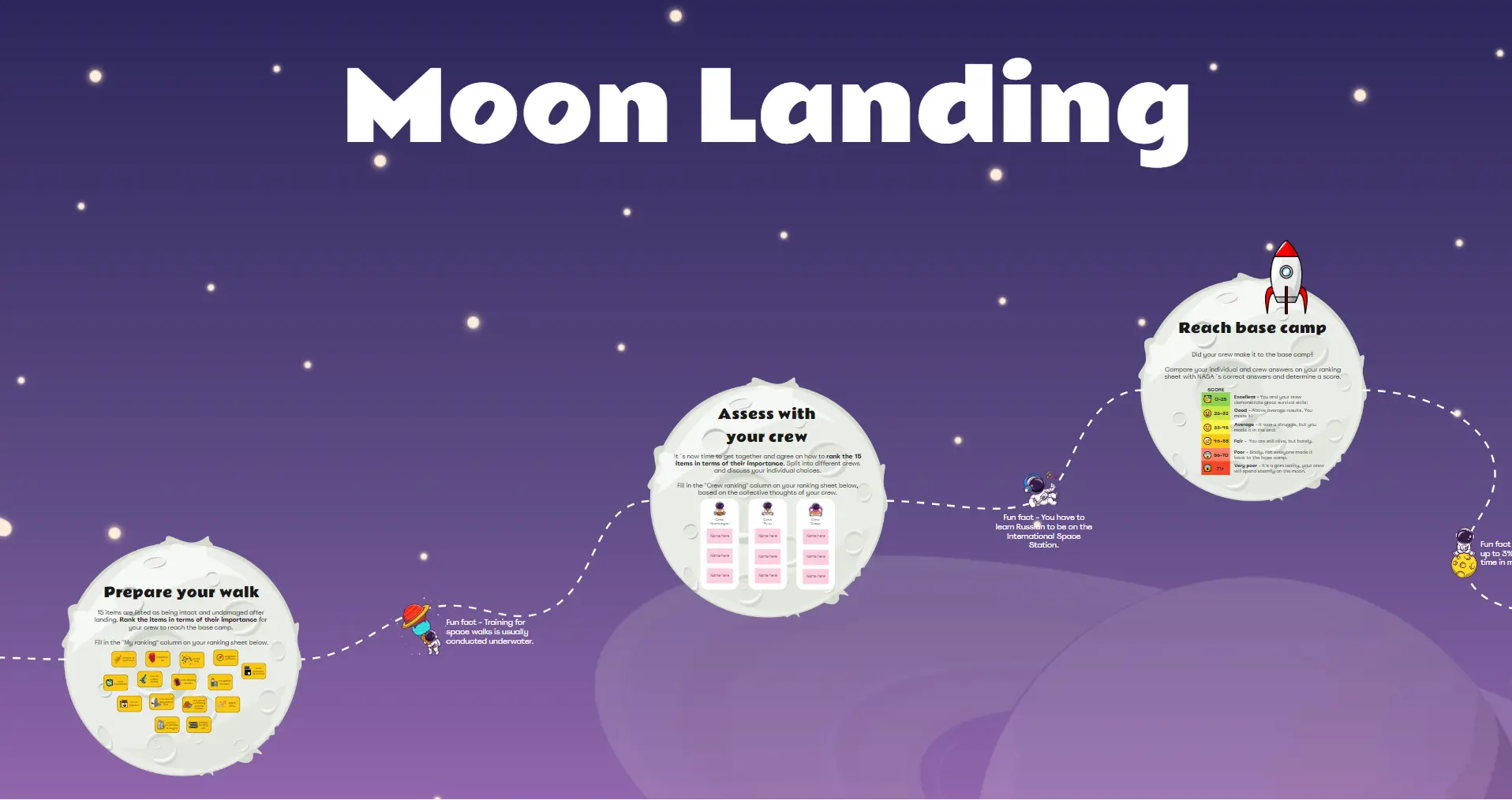Guiding Teams Through Miro Basics
In 60 minutes, you can introduce a group to the basics of Miro in a way that’s fun and engaging, while also creating opportunities for team members to get to know each other better.
This onboarding session begins with the basics and includes a few next-level features to spark enthusiasm for Miro’s endless possibilities.
Basics
Navigating (e.g. learn about the infinite canvas, move around, zoom in/out)
Adding emojis and stickers
Sharing reactions
Following participants and using ‘Bring everyone to me’
Adding images and icons
Adding sticky notes (e.g. change colours, resize, duplicate, add bulk stickies + shortcuts)
Organising sticky notes (e.g. duplicate, align, group sticky notes, add shapes or connections)
Next level
(!!!Surprise reveal!!!) Moving handwritten sticky notes from the physical world into the digital world
Using the templates library
Who is this for?
Teams new to Miro and each other, looking to collaborate effectively.
Group sizes between 5-30.
When to use?
At the start of a project or before Miro-based workshops to ensure everyone feels comfortable and is ready to actively participate in upcoming activities.
How to run this?
You should be familiar with Miro to lead this onboarding session. To help you run it smoothly, there’s a run sheet for facilitators and a detailed medium article.
Share the link: Just send one Miro board link to everyone. No need for separate copies.
Introduce Miro’s interface: In the first 10 minutes, show everyone around Miro by sharing your screen.
Activity time: Lead the group through three activities to practice what they’ve learned.
Wrap up & check out: Recap on what was covered and reflect.
The facilitator will need:
Physical post-it notes
An actual pen/ marker
Categories
Similar templates






